About ITFA Taekwon-Do
Taekwon-do is defined as:
"The scientific use of the body for self-defense, utilizing every available blocking and attacking tool to bring about the rapid defeat of one’s opponent!"
- General Choi Hong Hi, Founder of Taekwon-do
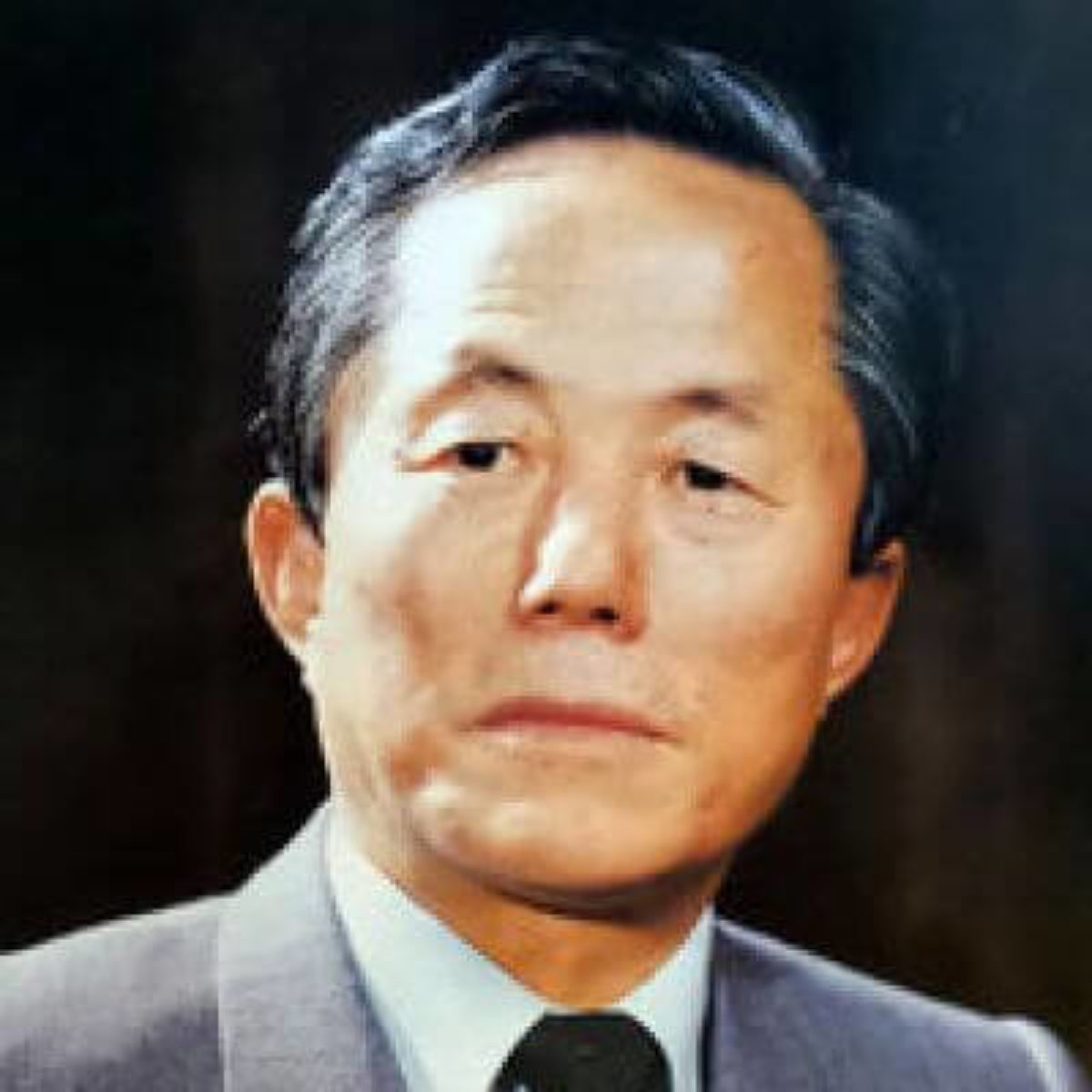
“Tae” means to smash or break with the foot… “Kwon” means to smash or break with the fist… “Do” means art, way or method. Loosely translated Taekwon-Do means “The Art of Hand and Foot”. There are five main skill sets within Taekwon-Do outlined below:
-
Patterns (Korean: Tul)
Patterns (Tul): A pattern is a series of fundamental movements set together in a logical sequence of defense and attack against one or more imaginary opponents.
The pattern is most commonly used to allow the student to be assessed at his/her grading examination. There are a total of 24 patterns from the beginner to 6th Dan black belt. One pattern must be mastered for each grading up to 1st Dan black belt, then 3 patterns for each black belt examination. Each pattern has a link with history and culture of the Korean people, through its name and diagram it scribes on the floor during its performance.
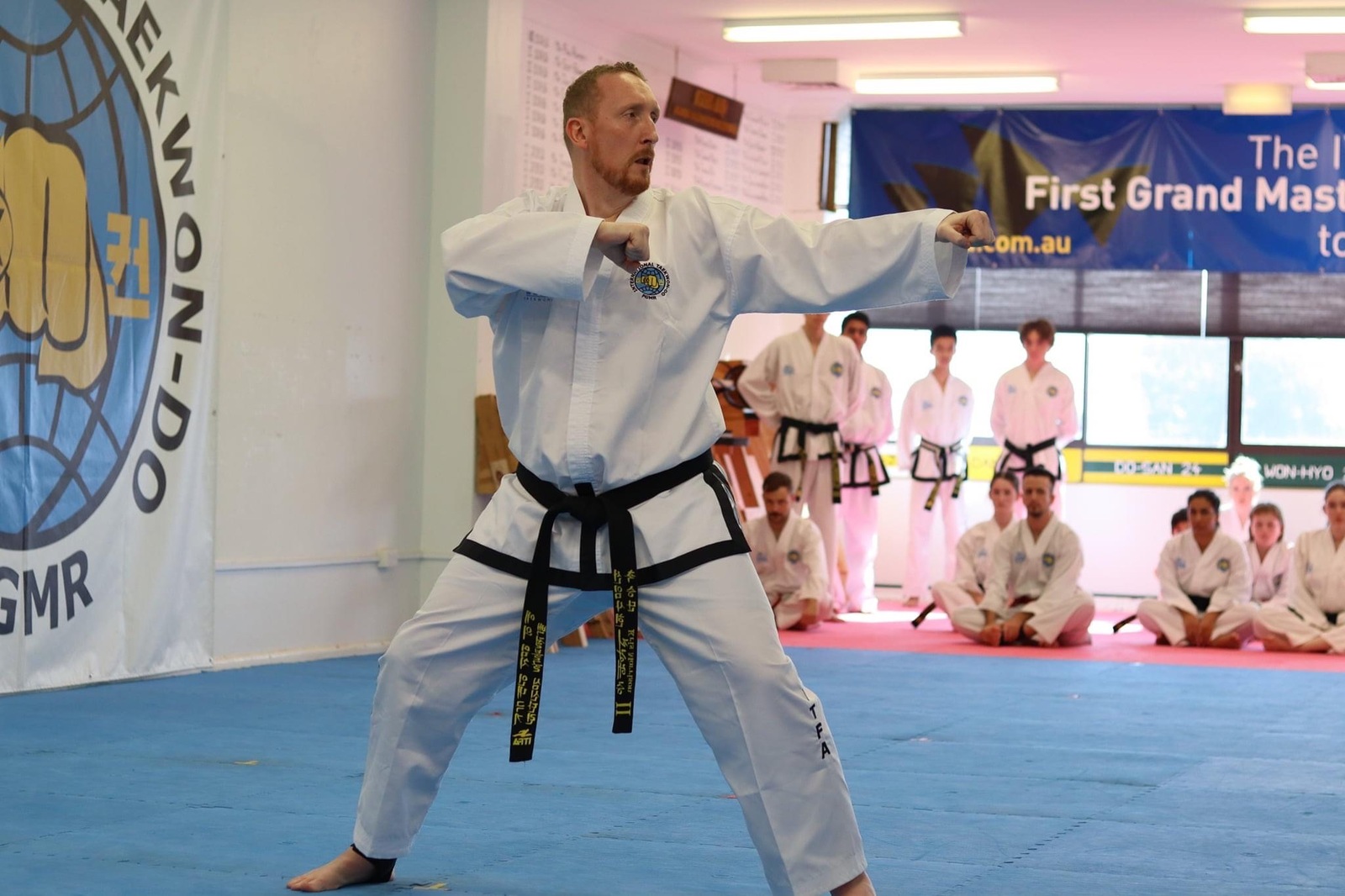
Mr Morrison performing a pattern
-
Sparring (Korean: Matsogi)
Sparring (Matsogi): During sparring the imaginary opponent is replaced with a real opponent so that the student can actually defend themselves against a live attack and counter to an exact target presented by an opponent. To start with, the student learns the procedure of very strictly controlled sparring in the form of 3-step, 2-step and 1step sparring. These form the basis for an effective self-defense against a moving target with few parameters guiding where and how to attack. It tends to be very fast and teaches the student how to move in a defense and attack situation. It also promotes tenacity and courage.

Mr Morrison performs 2 v 1 Sparring
-
Power Test (Korean: Wee Ryok)
Power Test (Wee Ryok: Taekwon-Do is the most powerful of the Martial arts and therefore must be controlled. Thus no contact is allowed unless senior grades wish to participate in light contact with consent from the Instructor. Therefore the students need an alternative target. Taekwon-Do provides a choice of targets to replace the human opponent.
The student can strike raw materials such as wood, tiles, bricks or more commonly, the specially developed plastic focus board. This allows the student to test and perfect full power techniques against measured resistance. The practice of ‘Breaking’ gives confidence to the student in that his/her techniques work and provide an examinable test.
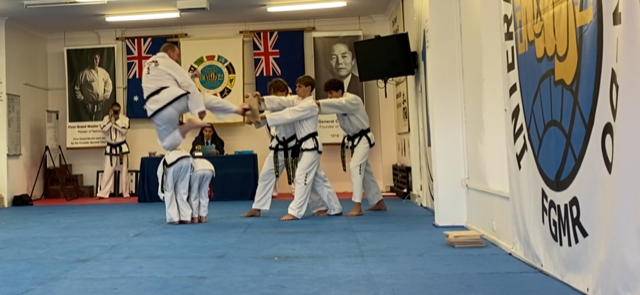
Mr Morrison performs a Flying Side-piercing Kick Break
-
Theory
Taekwon-Do cannot simply be copied. It has to be studied. As described in the definition in the first paragraph Taekwon-Do is a science. In the theory section, the student learns a code of conduct, or tenets that should become part of his/her life. The tenets are as follows: – Courtesy, Integrity, Perseverance, Self-control and Indomitable Spirit.
The student will also learn about the history of Taekwon-Do and its controlling bodies. Taekwon-Do as a science has been written down explaining all the techniques and theories behind methods of movement. This isn’t just a book – it is a fifteen-volume encyclopaedia containing more than 2600 movements.
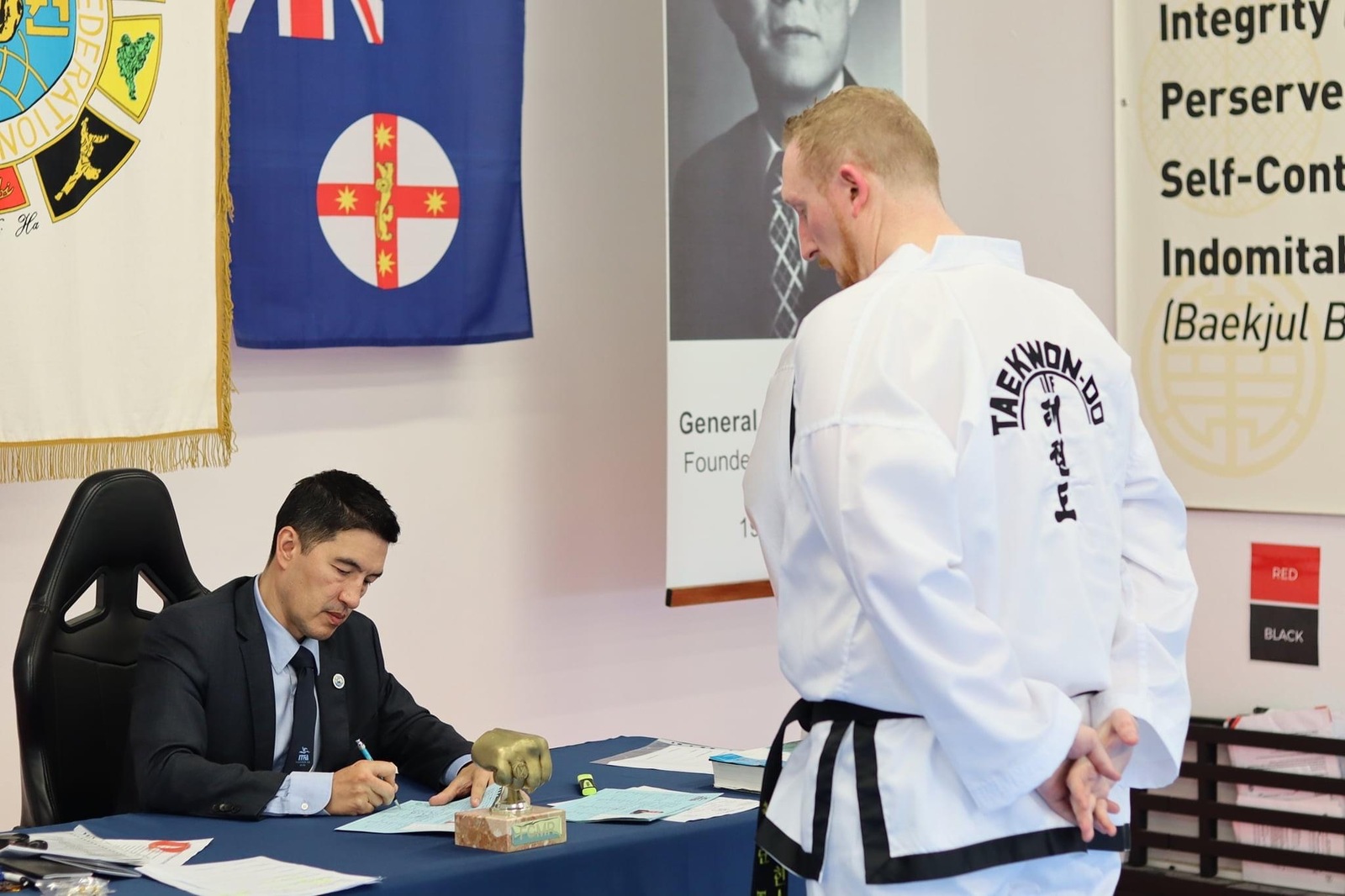
Answering Theory questions from Senior Master Andrew Kang-Hae Rhee, VIII Dan
-
Special Techniques
These are very advanced techniques utilizing multi-target attacks mainly for demonstration purposes. These techniques clearly show the superiority of the Taekwon-Do student over and above all other Martial Arts.
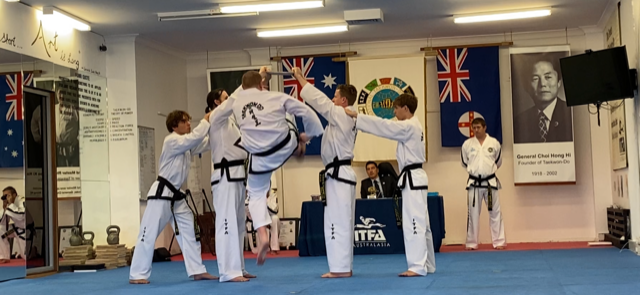
Flying High Kick
Schedule FREE Trial!
Thanks for contacting us!
We will be in touch shortly.If you contacted us outside of business hours it might take us a bit longer to respond.
